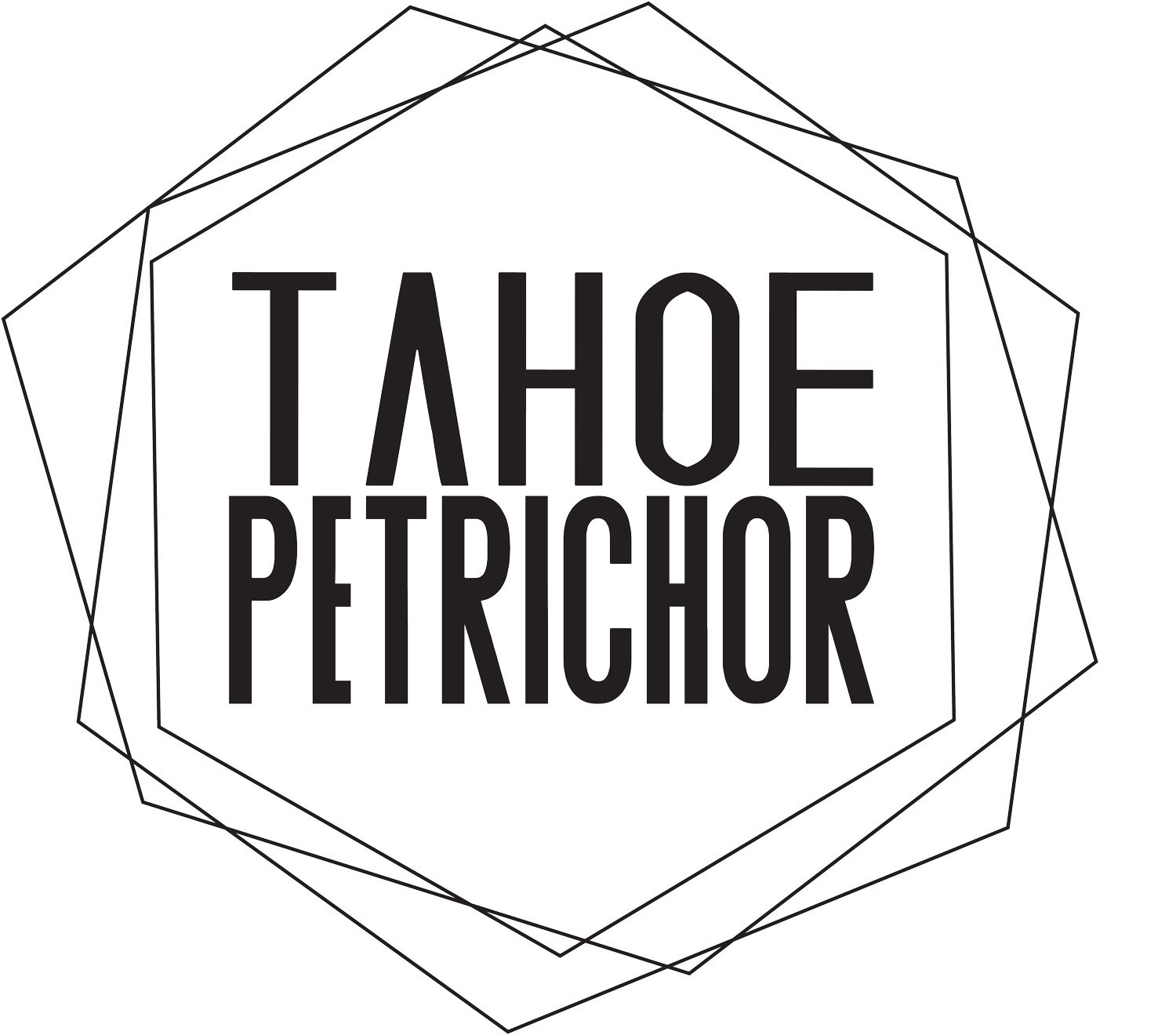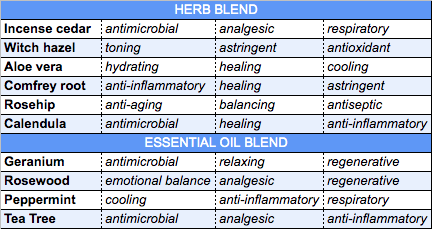Ingredients: Boulder Balm is made with chamomile (Matricaria chamomilla), marshmallow root (Althea officinalis), and locally harvested mullein (Verbascum thapsus) infused hemp seed oil (Cannabis sativa). We add handcraft rosehip (Rosa ssp.), comfrey (Symphytum officinale), and calendula (Calendula officinalis) extracts and combine it with healing arnica butter (Arnica montana), hydrating avocado butter (Persea americana), and soothing cocoa butter (Theobroma cacao). We make our own cedar essential oil by steam distilling local incense cedar (Calocedrus decurrens), and combine it with ylang-ylang, palmarosa, and myrrh resin. The foresty blend of essential oils and rich healing, soothing herbs, and butter is ideal for repairing the hands, feet, or just about anywhere that needs some serious attention.
Main beneficial properties: anti-inflammatory, healing, antimicrobial, antiseptic, analgesic, soothing.
FULL RESEARCH
MULLEIN
Mullein - Figwort family (Varbascum thapsus - Scrophulariaceae)
For Boulder Balm, we harvested local mullein and infuse it with cold-pressed hemp seed oil. When taken internally, mullein is a powerhouse for the respiratory system. Topically, mullein is used to soften and protect the skin and is excellent for all sorts of skin conditions including painful ones. The anti-inflammatory nature of this fuzzy leaved plant is bioavailable thanks to the polyphenols (antioxidants), iridoids, and pain-relieving saponins. Also, research has shown mullein to be antibacterial, sedative, narcotic, antiseptic, antiviral, with emollient and demulcent properties. Traditionally, tribes used mullein for pain, wounds, bruisings, or swellings, and during sweat baths. Dried mullein leaves have smoked for relaxation and respiratory conditions for thousands of years.
Other products that contain mullein - New, unreleased product, coming soon!
CHAMOMILE
Chamomile - Daisy family (Matriacaria recutita - Compositae)
Chamomile is one of the earliest recorded medicinal herbs, used both topically and internally when a calming and relaxing intervention is needed. Internally, this white flower commonly found in tea is used for neurological complaints, mood, and sleep complaints. Due to the calming nature, chamomile is useful for agitated, inflamed skin, wounds, blisters, and cuts as well as irritating skin conditions. Research has demonstrated skin regeneration through antioxidative activities. Known for its spasmolytic, sedative, anxiolytic, antiseptic, and anti-inflammatory actions, chamomile contains flavonoids, coumarins, and terpenes, notably, azulenes which attribute to the blue color the essential oil produces as well as the wound healing, anti-inflammatory effects.
MARSHMALLOW ROOT
Marshmallow root - Mallow family (Althea officinalis - Malvaceae)
Marshmallow root is more than just a culinary flavoring, this plant is an emollient with an affinity for soothing and relieving the skin including rough skin, burns, irritation, and/or swollen joints. Marshmallow root is another plant that is used internally for respiratory and gastrointestinal complaints. High in compounds like mucilage that attribute to the soothing effects both internally and topically. The anti-inflammatory effects are related back to the flavonoids present. In the lab, marshmallow root inhibited inflammation by 41-78% in acute cases, and by 52%-68% of chronic inflammation.
CALENDULA
Calendula - Daisy family (Calendula officinalis - Asteraceae)
Calendula is a bright yellow flower native to the Mediterranean countries. It was first brought to America by colonists who used this herb for protection. Now it is one of the most common and widespread medicinal plants around the world. The petals are edible and can be added to salads for a color pop with some useful therapeutic benefits. When cooked and added to rice or similar foods, it is known to change the pigment toward yellow. The flower has a wide range of therapeutic uses both internally and topically.
In Ayurvedic medicine, calendula is cooling, bitter, and pungent. In Traditional Chinese Medicine, the flower is neutral and drying. Calendula is associated with the sun and fire element. Historically, calendula was used as an astringent and anti-inflammatory agent integrated similarly to saffron (the most expensive spice in the world). Calendula was used to increase perspiration (fever & flu), to treat jaundice (liver dysfunction), stomach ulcers, during menses, inflammatory eye and skin conditions (wounds, sores, burns, cuts, minor infection, etc.). Calendula was ornamentally and strategically placed to ward off evil energy and infectious disease. The pigment was used for products, from clothing dye to cheese.
Since the 80s, calendula has shown to be beneficial on tissue regeneration and epithelial tissue development. Today, triterpenes are applauded for anti-inflammatory capabilities. The European Union has declared that calendula flower has oromucosal and cutaneous benefits with anti-inflammatory, astringent, immuno-stimulant, antiviral, antibacterial, anti-fungal, and vulnerary actions.
Other products that contain calendula : Bearly There
ROSEHIP
Rosehip - Rose family (Rosa ssp. - Rosaceae)
Rosehips are established as well-known as an anti-aging, skin healer. Aging can be attributed to time, lifestyle choices, and excessive UV exposure. With antiseptic, antimicrobial, and antioxidative properties, rosehips hydrate skin, regulate oil, are healing for hyperpigmentation, inflammation, skin blemishes, and scarring. Hydrophilic compounds such as ascorbic acid, fatty acids, quercetin, kaempferol, flavonoids, vitamin C, and other polyphenolic compounds have demonstrated strong antioxidant activity, reducing tissue damage. Recent research has shown rosehip to be beneficial for painful conditions.
Other products that contain rosehips : Mindful Mist
COMFREY
Comfrey - Borage family (Symphytum officinale - Boraginaceae)
Comfrey comes from the Latin word confirma, meaning to heal or unite. By no accident, this root is a true powerhouse for skin ailments. Consistent studies indicate comfrey to be useful for anything from bruises and sunburns to insect bites and sprains, strains, and swellings, or the pain that comes with these common human happenings. One of the bioactive compounds in comfrey is allantoin, a compound that speeds up the regeneration of damaged tissue. Other compounds include carotene, asparagine & mucilage (healing), tannin (astringent), rosmarinic acid (antioxidant), alkaloids, and inulin. Together these compounds promote anti-inflammatory, antiseptic, astringent, emollient, tonic, and vulnerary (wound healing) actions when used topically. Actually, comfrey is so easy to grow, it can easily become invasive if grown in a home garden.
References
American College of Healthcare Sciences. (2018). Comfrey Monograph.
Cohen, M. (2012). Rosehip: An evidence based herbal medicine for inflammation and arthritis. Australian Family Physician.
Essential Oil and Aromatherapy Experts. (2020). Rosehip benefits, uses for face, skin, hair, and where to buy.
European Medicines Agency. (2018). European Union Herbal Monograph on Calendula officinalis L., flos.
Garcia, G., Tissandié, L., Filippi, J., & Tomi, F. (2017). New Pinane Derivatives Found in Essential Oils of Calocedrus decurrens. Molecules (Basel, Switzerland), 22(6), 921.
Ibrahim, T. A., El-Hela, A. A., El-Hefnawy, H. M., Al-Taweel, A. M., & Perveen, S. (2017). Chemical composition and antimicrobial activities of essential oils of some coniferous plants cultivated in Egypt. Iranian journal of pharmaceutical research : IJPR, 16(1), 328–337
Marmol, I., Sanchez-de-Diego, C., Jimenez-Moreno, N. Ancin-Azpilicueta, C. Rodriguez-Yoldi, M. (2017). Therapeutic applications of rosehips from different Rosa species. International Journal of Molecular Sciences. 18(6), 1137
Michalun, N., & Michalun, M. (2001). Skincare & Cosmetic Ingredients Dictionary 2nd Ed. Thomas Learning. ISBN:1562636605
Native American Ethnobotanical Database. (2020). Incense-cedar (Calocedrus decurrens).
Natural Medicines Database. (2020). Mullein; Chamomile, Marshmallow root: Professional Monographs.
Panchal, M., Murti, K., & Lambole, V. (2010). Pharmacological properties of verbascum thapsus- a review. International Journal of Pharmaceutical Sciences. 5(2).
Tabassum, N., & Hamdani, M. (2014). Plants used to treat skin diseases. Pharmacognosy reviews, 8(15), 52–60.
Ulbricht, C. (2010). Natural Standard: Herb and Supplement Guide. Mosby: Elsevier. ISBN 978-0-323-07295-3
U.S. Forest Service. (2015). Calocedrus decurrens: Fire effects information system (FEIS).













![Book a CBD Massage [RENO]](https://images.squarespace-cdn.com/content/v1/5d16e5e02eabfc0001072ae7/1568931800244-NU42HKE8HYWS937IFYWI/image-asset.jpeg)
